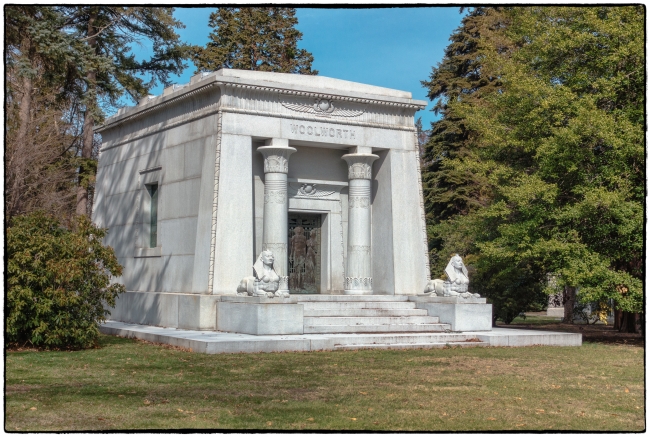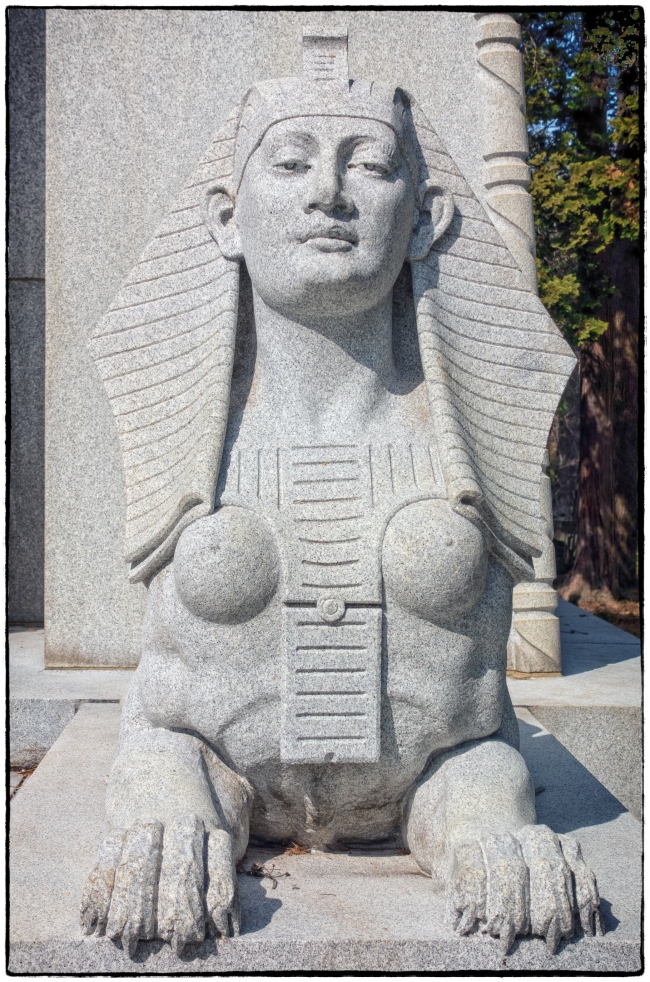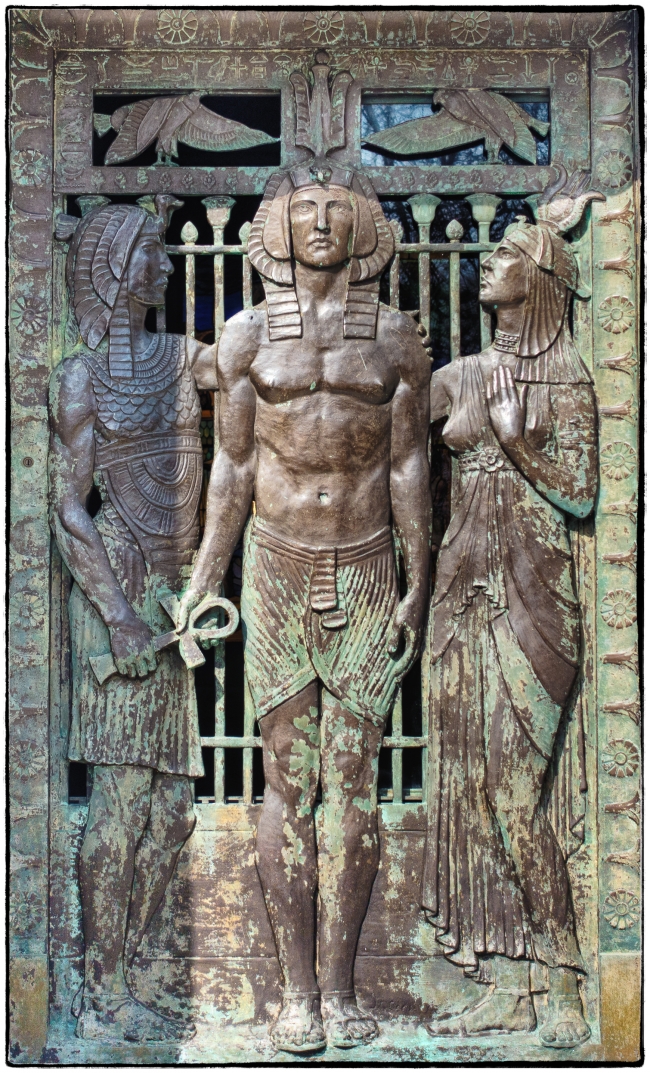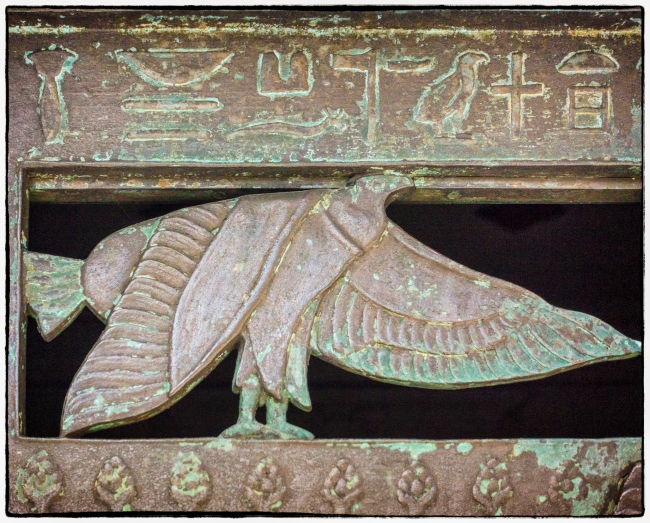I was particularly impressed by this structure, particularly the ornate doorway. I think it’s now become my all time favorite mausoleum.
Wikipedia describes Frank W. Woolworth as follows:
Frank Winfield Woolworth (April 13, 1852 – April 8, 1919) also known as Frank W. Woolworth or F.W. Woolworth was an American entrepreneur and the founder of F. W. Woolworth Company and the operator of variety stores known as “Five-and-Dimes” (5- and 10-cent stores) or dimestores, which featured a low-priced selection of merchandise. He pioneered the now-common practices of buying merchandise directly from manufacturers and fixing the selling prices on items, rather than haggling. He was also the first to use self-service display cases, so customers could examine what they wanted to buy without the help of a sales clerk.
According to the National Register of Historic Places Registration Form for Woodlawn Cemetery:
Frank W. Woolworth mausoleum … includes a bronze door designed by sculptor Julius C. Loester (1921), which was cast by the Roman Bronze Company. The Barre granite mausoleum was built by Farrington, Gould and Hoagland. The mausoleum is constructed in the exotic (Egyptian) Revival style with two sphinx sculptures flanking the entrance steps. Two columns with horizontal banding and palm capitals frame the recessed entrance. Both the entablature and the lintel above the entrance feature relief carvings of a winged solar disc, an icon that Egyptians believe offered protection to the dead. The mausoleum has a concave cornice and roll molding at its corners and where the façade meets the entablature. The interior was renovated by the family in 1941, with Italian marble and large double marble sarcophagus by Evans of Boston. The landscape design by Brinley and Holbrook, who executed plans for the New York Botanic Garden in 1920, “employed a formal scheme to accentuate the solidity and scale of the building, while successfully screening a vista spotted with many imposing mausolea.” Woolworth (1852-1919) was a businessman, merchant, and founder of F.W. Woolworth Company. Also entombed in the mausoleum is Barbara Hutton (1912-1979) known as the “Poor Little Rich Girl,” granddaughter of Woolworth and heir to his multimillion dollar estate.
Wikipedia describes Barbara Hutton as follows:
Barbara Woolworth Hutton (November 14, 1912 – May 11, 1979) was an American debutante/socialite, heiress and philanthropist. She was dubbed the “Poor Little Rich Girl,” first when she was given a lavish and expensive debutante ball in 1930, amid the Great Depression, and later due to a notoriously troubled private life.
Heiress to the retail tycoon Frank Winfield Woolworth, Hutton was one of the wealthiest women in the world. She endured a childhood marked by the early loss of her mother at age five and the neglect of her father, setting the stage for a life of difficulty forming relationships. Married and divorced seven times, she acquired grand foreign titles but was maliciously treated and often exploited by several of her husbands. While publicly she was much envied for her possessions, her beauty and her apparent life of leisure, privately she remained deeply insecure, often taking refuge in drink, drugs, and playboys.
Hutton had one child, Lance Reventlow, with her second husband, but was an indifferent and insecure parent and the subsequent divorce ended in a bitter custody battle. She later developed anorexia nervosa and perhaps therefore prevented further childbirth. Her son died in a plane crash in 1972 at the age of 36, leaving her devastated. She lived another seven years, dying of a heart attack at age 66. At her death, the formerly wealthy Hutton was on the verge of bankruptcy as a result of exploitation, as well as her compulsive generosity and spendthrift ways.
Her obituary in the Washington Post can be found in Heiress Barbara Hutton Dies at 66
Greek Style Sphinx. Apparently the Egyptian ones are always male.
Spectacular bronze doorway.
Detail of doorway. Horus?




